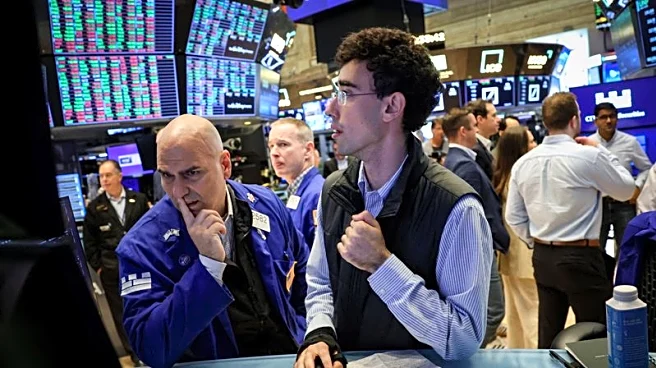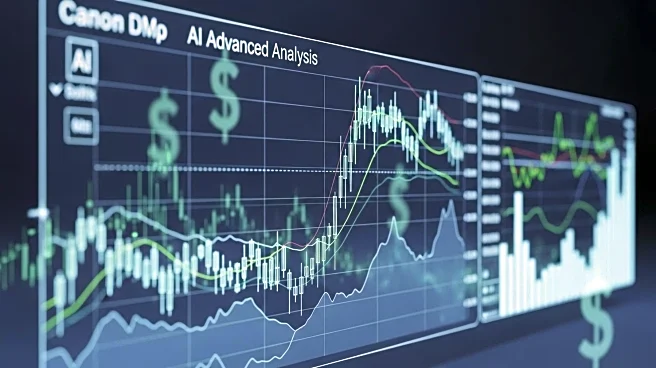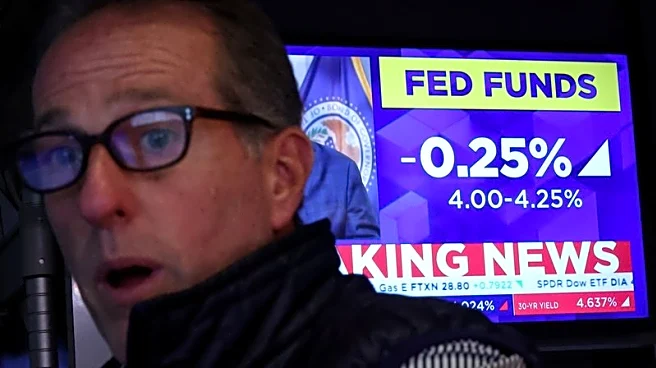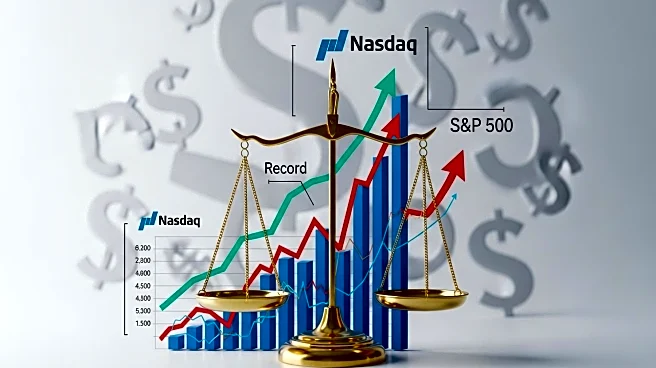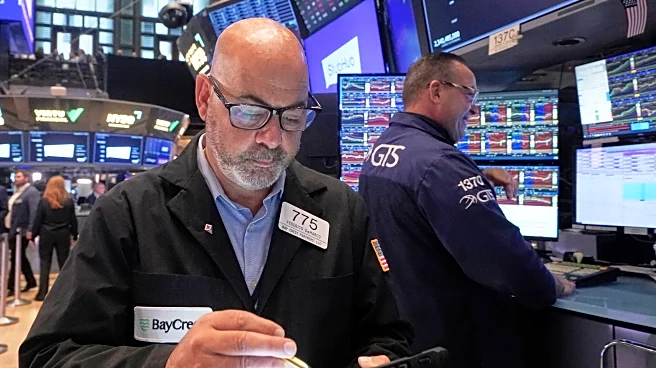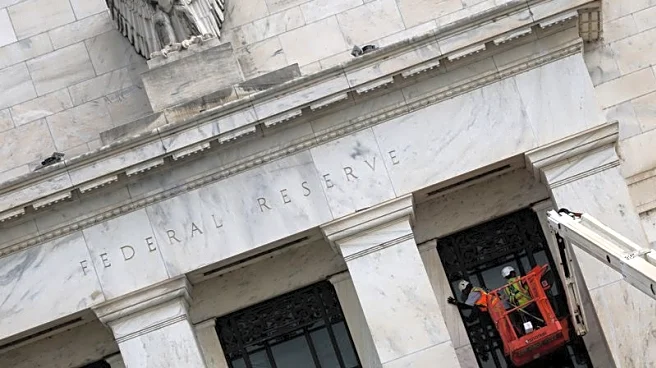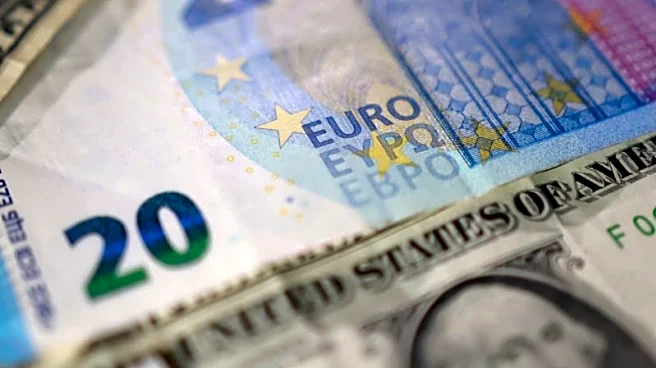What's Happening?
U.S. stocks experienced a significant rise on Thursday, with the Nasdaq Composite gaining over 200 points. This surge followed the Federal Reserve's decision to cut interest rates by 25 basis points, indicating potential further easing. The technology sector led the market rally, with Intel Corp. seeing a 23% increase after Nvidia Corp. announced a $5 billion investment in co-developing PC and data center chips. CrowdStrike Holdings Inc. also saw a substantial rise, with shares increasing by 13% due to its announcement of long-term AI initiatives and revenue targets. Additionally, U.S. initial jobless claims fell by 33,000 to 231,000, surpassing market expectations of 240,000. The Philadelphia Fed Manufacturing Index rose to +23.2 in September, marking its highest level since January.
Why It's Important?
The positive movement in the stock market reflects improved investor sentiment, as indicated by the CNN Money Fear and Greed index, which remained in the 'Greed' zone. The Federal Reserve's rate cut and the promising economic data, such as the decline in jobless claims and the rise in the manufacturing index, suggest a strengthening economy. This could lead to increased consumer confidence and spending, benefiting various sectors. However, consumer staples and discretionary stocks did not follow the overall market trend, closing lower, which may indicate selective investor confidence in specific industries.
What's Next?
Investors are closely monitoring upcoming earnings reports from companies like MoneyHero Ltd and Globus Maritime Ltd, which could further influence market sentiment. The Federal Reserve's future actions regarding interest rates will also be pivotal in shaping economic conditions and investor behavior. Continued positive economic indicators could sustain the current market rally, while any negative data might prompt caution among investors.
Beyond the Headlines
The Federal Reserve's monetary policy decisions are crucial in maintaining economic stability and growth. The recent rate cut aims to stimulate economic activity, but it also raises questions about long-term inflationary pressures. The tech sector's strong performance highlights the ongoing importance of innovation and investment in technology, which could drive future economic growth.


